How to fix screen flickering problem on Windows 10
Is your PC display always flickering? It could be an issue with an incompatible app or device driver -- Here's what you can do to fix it.

Generally speaking, the majority of users won't experience significant difficulties installing or upgrading to Windows 10. However, building an operating system that runs across thousands of hardware configurations is a complex task, as such it's expected that some PCs may run into issues.
One common problem that many users typically come across on Windows 10 is flashing or flickering on the screen, which is likely to be caused by incompatible applications or display drivers.
In this Windows 10 guide, we'll walk you through the steps to troubleshoot and fix the flickering problem you may be experiencing on your computer.
- How to troubleshoot screen flickering
- How to uninstall incompatible applications
- How to update graphic drivers
How to troubleshoot screen flickering
The first thing you need to do is to figure out what's actually causing the screen to flicker.
You can quickly find this out by opening the Task Manager by right-clicking the Taskbar and selecting Task Manager, or you can use the Ctrl + Shift + Esc keyboard shortcut.
The next step is to pay attention to the screen and see if the Task Manager flickers.
If everything on the screen flickers, but Task Manager doesn't, then you're dealing with an incompatible application. In the case that Task Manager flickers along with everything else on the screen, then the problem is most likely to be the graphics drivers.
Get the Windows Central Newsletter
All the latest news, reviews, and guides for Windows and Xbox diehards.

Once you've figured out what is generally causing the issue you went through the troubleshooting steps, you can follow the steps below to tackle the problem.
How to uninstall incompatible applications
While there is a large number of applications that could cause issues, usually you can narrow it down to your third-party antivirus and applications designed for previous versions of Windows.
If you have installed Norton Antivirus, iCloud, and IDT Audio, these are applications known in the past to cause problems.
To uninstall incompatible applications, do the following:
- Open Settings.
- Click on System.
- Click on Apps & features.
- Select the app causing the problem and click Uninstall.
- Click Uninstall again to confirm.

If you're uninstalling an app from the Store, there are not further actions to take. However, if you're uninstalling a traditional desktop application, you'll have to go through the uninstall process.
Alternatively, you can use Control Panel to uninstall a problematic desktop application.
- Open Control Panel.
- Click on Uninstall a program.
- Select the application you want to remove.
- Click Uninstall and go through the uninstall process.
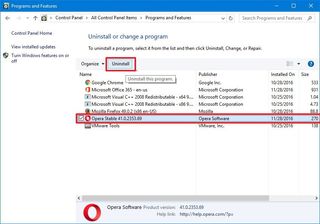
Once you uninstall the applications that may be causing the problem, reboot your computer, and see if that fixes the problem.
If you have successfully addressed the issue, but you need the application, make sure to check the software company's support website for more information, an updated version, or alternative options that will work on Windows 10.
How to update graphic drivers
If the Task Manager was flickering along with everything else on the screen, then chances are that the problem is with the video driver.
In this case, it's recommended to remove your current video driver while your computer is in safe mode and then reinstall the latest driver update.
To start your computer in safe mode, do the following:
- Open Settings.
- Click on Update & security.
- Click on Recovery.
- Under Advanced startup, select Restart now.
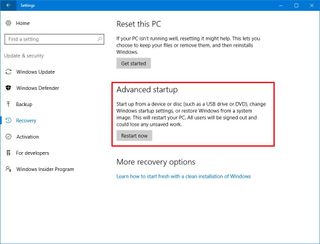
- Click on Troubleshoot.
- Click on Advanced options.
- Click on Startup Settings.
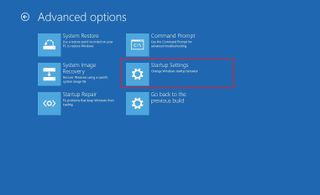
- Click on Restart.
- After your computer reboots, select the option 4 to start in Safe mode. Alternatively, you can choose option 5 to start on Safe Mode with Networking.
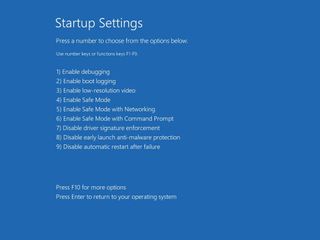
To uninstall your video card driver, do the following:
- Use the Windows key + X keyboard shortcut to open the Power User menu and select Device Manager.
- Click to expand Device adapters.
- Right-click the adapter and select Uninstall.
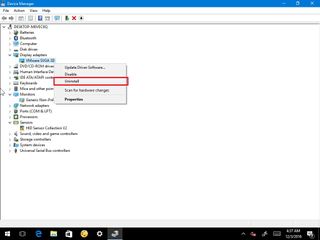
- Select the Delete the driver software for this device check box.
- Click OK to confirm.
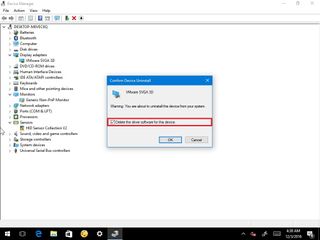
- Restart your computer.
To reinstall the video drivers, do the following:
- Open Settings.
- Click on Update & security.
- Click on Windows Update.
- Click the Check for updates button to download and install the latest video driver.

Windows Update always delivers the most compatible device drivers, but it doesn't mean that they're the most recent version available. Alternatively, instead of using Windows Update, you can download and install the required driver manually from your graphics card manufacturer's website — of course, you'll need to know which graphics card is installed in your computer, which you can find by looking up your system information.
Here's a list of the most popular support sites to download the latest video drivers:
In case the latest driver doesn't fix the flickering problem on your computer, as a last resort you can try to download and install an older version of the driver from your manufacturer's support website (if available). While you may miss out on new improvements and features, sometimes an older version of the driver may work better on your computer.
The caveat installing an older version of the driver is that Windows Update may try to replace it with a newer version. If the previous version is working on your computer, you can temporarily prevent the operating system from updating a particular driver.
Were you able to fix the screen flickering on Windows 10? Did you use a different method? Tell us in the comments below.
More Windows 10 resources
For more help articles, coverage, and answers on Windows 10, you can visit the following resources:
- Windows 10 on Windows Central – All you need to know
- Windows 10 help, tips, and tricks
- Windows 10 forums on Windows Central
Mauro Huculak is technical writer for WindowsCentral.com. His primary focus is to write comprehensive how-tos to help users get the most out of Windows 10 and its many related technologies. He has an IT background with professional certifications from Microsoft, Cisco, and CompTIA, and he's a recognized member of the Microsoft MVP community.

